
|

|
|
Home Site Search Contact Us Subscribe
|
|
|
The Great Compilation: 14th International Exhibition of Architecture di la Biennale di Venezia Rem Koolhaas has irrevocably changed the Venice Biennale's focus away from starchitects to architecture itself. Indeed, I left impressed and invigorated, but curious as to what might follow. By Johannes M.P. Knoops, FAAR, Assoc. AIA July 17, 2014 With S, M, L, XL, Rem Koolhaas re-defined how we examine architecture, and in many ways its implications may be his most critical contribution to history. Differing from Delirious New York, the book S, M, L, XL defined a new modus operandi in presenting architecture. It embraced and deployed the ease associated with digital representation. The book compiled images, sketches, diary excerpts, and essays into a single aggregate accumulation. Relying on compilation as a method to compose his book, Koolhaas provided us with the opportunity to draw comparisons across various modes of representation. Compilation often displaced the necessity for written text, and permitted a non-linear story line. Ultimately his book elevated compilation into a way of thinking.
As Edward Tufte, the father of info-graphics, implored us: eliminate the ornament, use a common visual language, place your data adjacent, visualize the quantitative information, but above all be factual, truthful, and clear.
In many ways this Venice Biennale can be understood as a three-dimensional info-graphic – a compilation of multi-modal data from which we can draw our own comparative analysis. Comprised primarily of three segments or compilations, the Biennale not only occupies much of the Giardini (gardens), but also sprinkles itself about Venice.
-- “Elements of Architecture,” located in the Central Pavilion in the Giardini -- “Moditalia,” located in the Arsenale -- “Absorbing Modernity 1914-2-14,” located in the Arsenale, National Pavilions, and off-site locations
Compiling the fundamentals: “Elements of Architecture”
Initially a book, the exhibition “Elements of Architecture” is the by-product of a two-year research studio with students from Harvard’s GSD led by Rem Koolhaas/AMO (Koolhaas’s research office) and Stephan Trüby, and organized by Dean Moshen Mostafavi. To quote Koolhaas’s introduction:
“In this exhibition we examine micro-narratives revealed by focusing on the scale of the detail or the fragment. ‘Elements of Architecture’ looks at the fundamental of our buildings, used by any architect, anywhere, anytime”: Ceiling; Window; Corridor; Balcony; Floor; Façade; Fireplace; Roof; Door; Stair; Escalator; Elevator; Toilet; Wall; Ramp.
Italy Compiled: “Monditalia”
The Arsenale focused its attention on Italy itself with the multi-media installation “Monitalia.” This compilation also mined other Biennale genres in a kinetic juxtaposition – as dance, theater, music, and cinema flowed down its corridors to both inform and engage visitors. Intended as a “scan” of Italy, the following snippets illustrate Koolhaas’s vibrant collage.
Concluding the Compilation
Is there ever too much? As long as the work holds – no, there is never too much. Rem Koolhaas delivered this re-defining Biennale thanks to his stature and his uncompromising sense of purpose. A lesser architect’s efforts at such an overhaul would have disappointed. So few in life ever achieve the respect of so many competing desires. Koolhaas has irrevocably changed the Venice Biennale’s focus away from starchitects to architecture itself. Indeed, I left impressed and invigorated, but curious as to what might follow.
The compiler has left us with much to ponder.
Compiling modernities: “Absorbing Modernity 1914-2-14”
Whether located in the Arsenale (that portion of the Biennale displayed in the impressive complex of the Venetian empire’s maritime arsenal), in the Giardini’s freestanding national pavilions, or in off-site locations, each country contributed to Koolhaas’s aggregate vision. Challenged to investigate the history of their modernization from 1914 to 2014, 66 nations joined the call.
Culled from each pavilion’s introductory panel, the following fragmental excerpts are the essence of each nation’s compilation. Presented in the order I encountered them, they were ultimately too numerous to include all in my personal compilation.
Italy, in nesti/grafting (Arsenale) “It would appear that this is the original contribution of our country’s design culture over the last century: an ‘anomalous modernity,’ marked by the ability to innovate and at the same time interpret previous conditions.”
Bahrain, Fundamentalists and Other Arab Modernisms (Arsenale) “Fundamentalists and Other Arab Modernisms is an exploration of the links between colonialism, fundamentalism, and modernity across the Arab World in an effort to understand the links between each of these movements and their relation to the architecture of the time.”
Republic of Kosovo, Visibility (imposed modernity) (Arsenale) “Kosovo can be a case study of erasure of the rich regional urban culture in the name of Modernity.”
Croatia, Fitting Abstraction (Arsenale) “Intense historical conditions of a continually contested territory generated a permanent state of instability and material insecurity...The protracted state of scarcity of means was regularly compensated by a heightened attention to conceptual spatial thinking. Shared historical circumstances in all Croatian regions...explains why it is precisely the resulting abstraction that served as a common denominator of disparate regional vernaculars.”
Malaysia, Sufficiency (Arsenale) “A fundamental of architecture is shaped by the idea of sufficiency, which begins with a mental measurement of material adequacy...On the precept of sustainability it can be measured by one's carbon footprint, or in construction it can suggest minimum building footprint or optimum structure.”
Kuwait, Acquiring Modernity (Arsenale) “To help articulate the nation’s history of modernization, the Pavilion team has chosen to focus its participation on the establishment of the Kuwait National Museum in 1957.”
Switzerland, Lucius Burckhardt and Cedric Price. A stroll through a fun palace (Giardini) “In a digital time of unlimited access to information, where everyone can be an architect, a curator, an intellectual thinker, Hans Ulrich Obrist’s Lucius Burckhardt and Cedric Price – A stroll through a fun palace revisits the recent past of architecture through retrospectives of Lucius Burckhardt (1925–2003) and Cedric Price (1934–2003), reflecting on its future in the 21st century.”
Belgium, Interiors. Notes and Figures (Giardini) “Focusing on the home, the book “Interiors, Notes and Figures” records and analyzes the domestic landscapes that result from this process of modification...Each intervention is accompanied by the pages from the book that locate its point of emergence.”
Great Britain, A Clockwork Jerusalem (Giardini) “It examines how traditions of the romantic, sublime, and pastoral, as well as interests in technology and science fiction, were absorbed to create a specifically British form of Modernism.”
The Czech Republic, 2×100 mill.m2 (Giardini) “...presents the architecture of large housing projects realized between 1914 and 2014 both on the territory of the former Czechoslovakia and its successional states.”
Australia, Augmented Australia (Giardini) “Augmented Australia showcases 11 historical and 11 contemporary Australian projects from the past 100 years, which, for various reasons, were never built.”
Greece, Tourism Landscapes: Remaking Greece (Giardini) “design for a tourisim inhabitation...placed in the landscape, the research of the relationship between architecture and the surrounding landscape, the ground and the sea.”
Romania, Site Under Construction (Giardini) “The Romanian Pavilion brings industrial architecture as generator of modernity into discussion.”
Spain, Interior (Giardini) “The vindication of the interior could be interpreted as a partial analysis of Spain’s 20th century architectural legacy and an historic tradition that dates back to Roman and Arab architecture.”
USA, officeUS (Giardini) “Curators Eva Franch I Gilabert, Ana Miljački, and Ashley Schafer re-imagine the U.S. Pavilion as an active, global, experimental architecture office that researches, studies, and remakes projects from an onsite archive of 1,000 buildings and the 200 U.S.-based architecture offices engaged in their construction.”
Nordic Countries, Forms of Freedom. African Independence and Nordic Models (Giardini) “During a few intense years in the ‘60s and ‘70s, Nordic Architects contributed to the rapid process of modernization in this part of Africa.”
France, Modernity: promise or menace? (Giardini; one of three pavilions awarded a Special Mention for National Participation) “Since 1914, France has through the contributions of Architects and Engineers much less ‘absorbed’ modernity than has shaped it. Including prefabrication, Prouvé, Cité de la Muette, and Tati’s Mon Oncle.” Germany, Bungalow Germania (Giardini) “Two buildings of national and historical importance anchor the project within the past century: the German Pavilion and the Kanzlerbungalow [Chancellor Bungalow] in Bonn, realized by Sep Ruf in 1964.”
Israel, Urburb Ori Scialom (Giardini) “The Israeli Pavilion is transformed into a contemporary construction site furnished with four large sand-printers. The site and the sand printers delineate the story of 100 years of modernist planning.”
Hungary, Építés (Giardini) “The communal experience of building, the immense, sacred power of creation, and architecture as service: this is what the Carpathian Basin model is about.”
Finland, Re-Creation (Giardini) “Respecting Aalto’s idea, the pavilion now serves as a path between the two installations, one created in Finland and made of spruce, the other created in China and made of bamboo.”
Russia, Fair Enough (Giardini; one of three pavilions awarded a Special Mention for National Participation) “Fair Enough is an expo of ideas. Each exhibit marks a milestone in modernization and clears a path for new efforts. Together, they form a marketplace of urban intervention – made in Russia, open to the world.”
Japan, In the real world (Giardini) “The reexamination of modernism in Japanese architecture lies in the synergy of these activities of the 1970s. Ultimately, they were desperate efforts to redefine architecture by learning from life in the real world.”
Korea, Crow’s Eye View: The Korean Peninsula (Giardini): Awarded a Golden Lion for Best National Participation “In the Korean Pavilion, the architecture of North and South Korea is presented as an agent – a mechanism for generating alternative narratives capable of perceiving both the everyday and the monumental in new ways...The exhibition is inspired by Crow’s Eye View a serial poem.”
Canada, Arctic Adaptations (Giardini) One of three pavilions awarded a Special Mention for National Participation “Arctic Adaptations argues for a shift from architecture as problem solver to opportunity seeker. 2014 marks the 15th anniversary of Nanavut’s founding as a territory.”
The Netherlands, Open: A Bakema Celebration (Giardini) “...a critical re-thinking of the idea of the open society through the work of Jaap Bakema.”
Serbia, 14-14 (Giardini) “The daylight-filled interior of the exhibition space is a framework for 100 significant architectural projects between 1914 and 2014.”
Austria, Plenum. Places of Power (Giardini) “The assembly of 196 parliaments as 1:500 scale models creates a parliament of parliaments, a plenum of similarities and differences, where monumentality becomes ornament through repetition.”
Brazil, Brazil: Modernity as Tradition (Giardini) “’No wonder modernism has become Brazil’s tradition’ – Oscar Niemeyer, 1958.”
Poland, Impossible Objects (Giardini) “One example of a mythologized reality is the rebirth of the Polish state in 1918...an experience of non-modern modernity.”
Venice, The Sonnets in Babylon (Giardini) “’The Sonnets in Babylon, 101 of my hand drawings, stand together in this exhibition as one canvas, without apparent order or hierarchy’ – Daniel Libeskind.”
Denmark, Empowerment of Aesthetics (Giardini) “We have asked the internationally acclaimed Danish landscape architect Stig L. Andersson to deploy his architectural theories and artistic practice in order to explore the Danish architecture culture of the previous century and its global aspirations for the 21st century.”
Montenegro, Treasures in Disguise (off-site location) “The Montenegro Pavilion presents four examples of late-modernist architecture that were built in Montenegro between 1960 and 1986. When these buildings were first constructed, they radiated their builders’ enthusiasm and confidence about the new society they were building. Only a few decades later, these buildings embody the complete opposite.”
Antarctica, Antarctopia (off-site location) “The Antarctic Biennale is conceived by the artist Alexanter Ponomarev as a cultural exchange with the continent’s scientists and support staff. This independently-funded project – bringing artists, architects, and other thinkers down South – will confront the resident elect with visions of Antarctic enterprise that they may not recognize, and attempt to draw out the implications of the Antarctic experience that go undocumented.”
Beyond the Compilation: “Collateral Events”
Twenty-one different collateral venues augment this year’s Architecture Biennale. Located within the city of Venice, these events are vetted by the Director but sponsored by a variety of national and international non-profit institutions. Of these, two exhibitions are of particular note, Moskva: urban space and Time Space Existence, each very different from the other.
Moskva: urban space is a well-crafted installation vividly illustrating Moscow’s “connective tissue” – the city’s historically distinctive public spaces. While pondering its identity, the exhibit also projects into the future with a full-size fragment of a new cultural center, Zaryadye Park.
Time Space Existence surveys a wide spectrum, from pioneering investigations to projects by established architects who work globally. For example, the non-profit group Terreform ONE presented Bio City Map, a three-dimensional info-map illustrating population density as a parametric construct. Focused on our planet’s 25 densest cities, it employed colonies of E. Coli in its computation. Then, in another direction but also from New York City, Louise Braverman, FAIA, developed an immersive installation capturing her firm’s latest project, the Centro de Artes Nadir Afonso, an art museum in Boticas, Portugal. This well-considered installation parallels the highly accomplished design of the actual architecture.
Rooted in his native New York, Johannes M.P. Knoops, FAAR, Assoc. AIA, often speculates on urban narratives both locally and abroad. Distinguished with a Rome Prize, Architectural League Prize, John Dinkeloo and Van Alen Fellowships, he is a tenured associate professor at FIT/SUNY where he shares his passion for a design’s ability to communicate meaning.
|
(click on pictures to enlarge) 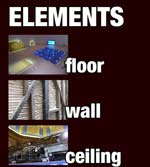 Johannes M.P. Knoops “Elements of Architecture”  Johannes M.P. Knoops “Elements of Architecture”  Johannes M.P. Knoops “Moditalia” 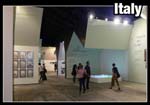 Johannes M.P. Knoops Italy: “in nesti/grafting”  Johannes M.P. Knoops Great Britain: “A Clockwork Jerusalem” 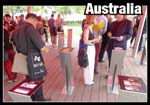 Johannes M.P. Knoops Australia: “Augmented Australia” 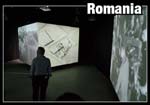 Johannes M.P. Knoops Romania: “Site Under Construction” 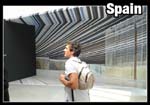 Johannes M.P. Knoops Spain: “Interior” 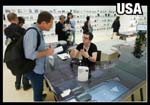 Johannes M.P. Knoops USA: “officeUS” 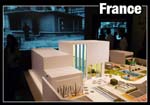 Johannes M.P. Knoops France: “Modernity: promise or menace?” 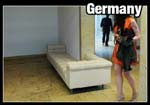 Johannes M.P. Knoops Germany: “Bungalow Germania”  Johannes M.P. Knoops Israel: “Urburb Ori Scialom”  Johannes M.P. Knoops Russia: “Fair Enough” 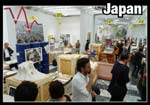 Johannes M.P. Knoops Japan: “In the real world” 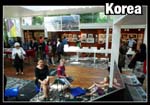 Johannes M.P. Knoops Korea: “Crow’s Eye View: The Korean Peninsula” 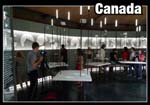 Johannes M.P. Knoops Canada: “Arctic Adaptations” 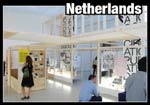 Johannes M.P. Knoops The Netherlands: “Open: A Bakema Celebration” 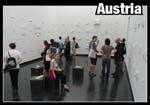 Johannes M.P. Knoops Austria: “Plenum. Places of Power” 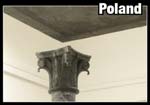 Johannes M.P. Knoops Poland: “Impossible Objects” 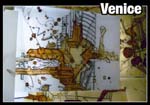 Johannes M.P. Knoops Venice: “The Sonnets in Babylon” 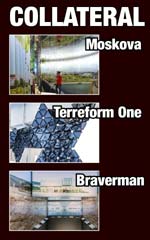 Johannes M.P. Knoops; Terreform ONE; Louise Braverman, Architect photographs by Sergio Pirrone Collateral Events: “Moskva: urban space”; Terreform ONE: “Bio City Map”; Louise Braverman, Architect: Centro de Artes Nadir Afonso |
© 2014 ArchNewsNow.com